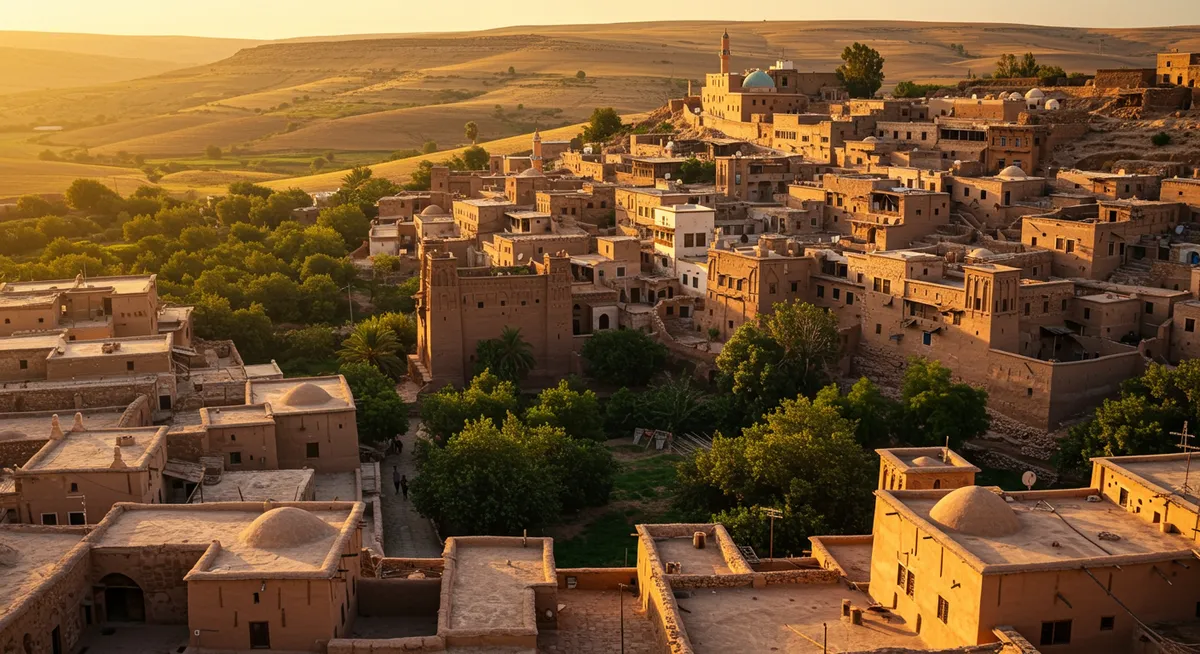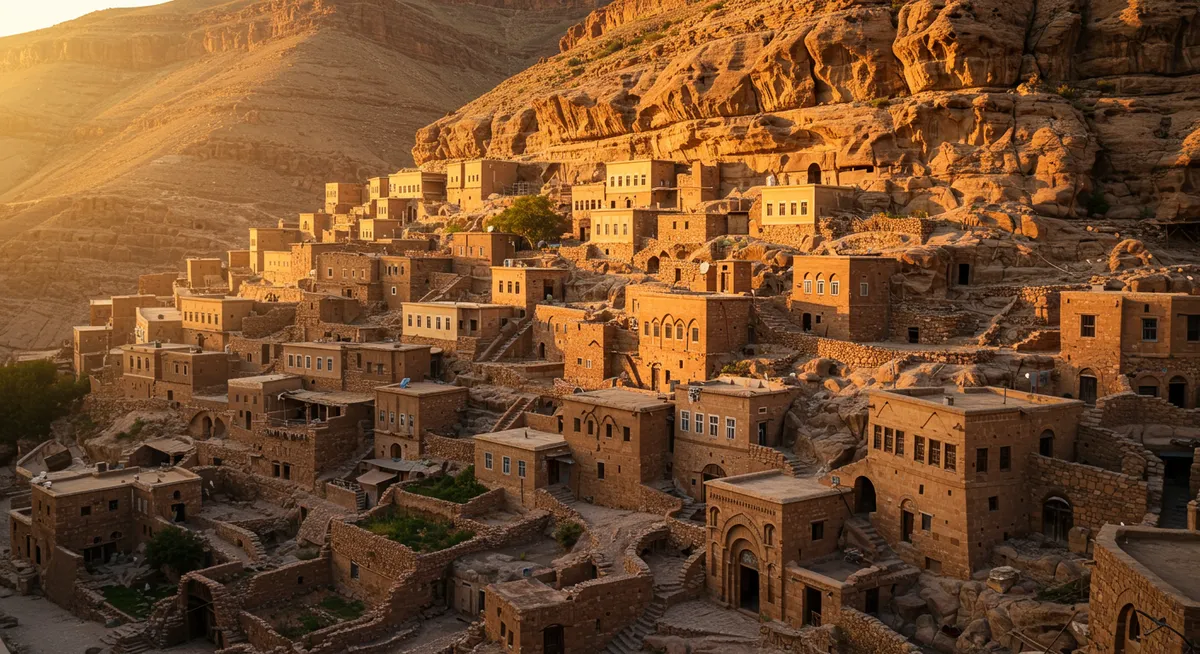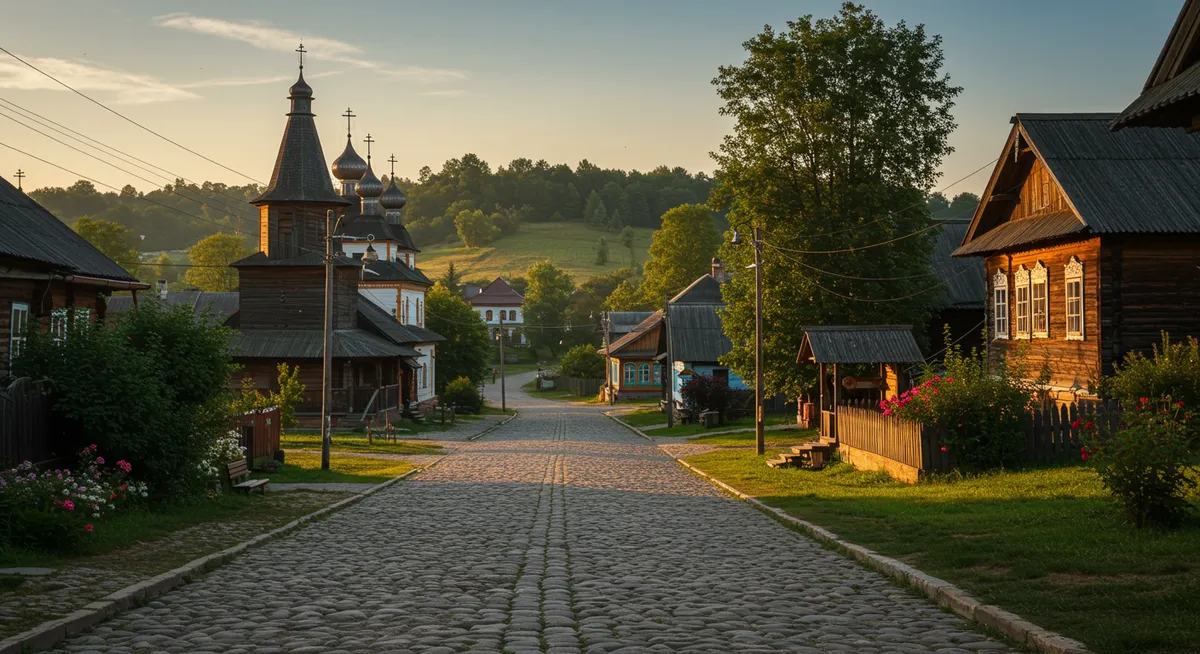The Oldest Inhabited Villages in the Middle East

The Oldest Inhabited Villages in the Middle East
The Middle East's landscape is dotted with settlements of extraordinary antiquity—villages and small towns where continuous human habitation spans thousands of years. Unlike the carefully preserved historic villages of Europe, these Middle Eastern settlements offer something more profound: living connections to the earliest chapters of human civilization. From ancient stone communities perched on desert cliffs to stepped mountain towns where roofs serve as streets, these remarkable places showcase distinctive architectural traditions developed over millennia. What makes them truly special, however, is their continuity—many maintain traditional ways of life, building techniques, and social structures that connect modern residents directly to their distant ancestors.

1. Masuleh: Iran's Stepped Mountain Marvel
Cascading down a steep mountainside in Iran's Gilan province, Masuleh presents one of the world's most remarkable examples of vernacular architecture adapted to extreme topography. This extraordinary thousand-year-old settlement features a unique stepped structure where the roof of each house serves as the courtyard or street for the house above it, creating a living architectural marvel that seems to defy gravity. Yellow clay-covered buildings rise organically from the lush green mountainside, creating a distinctive cityscape unlike anywhere else in the world.
What Makes It Special
- Vertical Architecture: Features a unique terraced design where buildings are built into the mountainside with roofs serving as streets
- Vehicle-Free Environment: No cars can enter the village due to its vertical layout, preserving a pedestrian-only atmosphere
- Distinctive Color Palette: Ochre-colored buildings with wooden balconies create a striking contrast against the green mountain backdrop
- Living Heritage: Maintains traditional crafts, especially intricate woodwork and wool felt making
Historic Significance
While the current site of Masuleh dates to approximately the 10th century CE, the settlement's origins trace back much further. The village was relocated from a site 6 kilometers away called Old Masuleh following a devastating outbreak of disease. The extraordinary architectural style evolved as a brilliant solution to extreme spatial limitations on the steep mountainside, maximizing livable space while providing protection from harsh weather conditions. The yellow clay covering on buildings serves both decorative and practical purposes, helping with insulation while reflecting sunlight during summer months. Unlike many historic settlements that survive primarily as tourist attractions, Masuleh maintains a significant permanent population that continues traditional lifeways while adapting to modern needs.
What to Experience
Explore the village's extraordinary four-level interconnected structure, climbing narrow stairways between levels and walking across rooftops that function as public spaces. Visit traditional workshops producing wool felt products (namad) and wooden crafts that have been made using the same techniques for centuries. Discover the historic Masuleh Bazaar, featuring traditional shops built into the mountain in a linear fashion. View the village's historic mosque with its distinctive architecture adapted to the steep hillside. Hike surrounding forest trails to experience the dramatic setting and views of the village rising from the mountainside.

2. Dana: Jordan's Ancient Stone Village
Perched dramatically on the edge of the Great Rift Valley in Jordan, Dana stands as one of the Middle East's most spectacular historic stone villages. This ancient settlement, dating back approximately 500 years in its current form but located in a valley with 6,000 years of human habitation, showcases traditional Jordanian mountain architecture at its finest. The beautifully preserved stone houses rise organically from the cliffside, gazing out over a vast nature reserve that drops 1,700 meters to the valley floor, creating one of the region's most breathtaking settings for a historic village.
What Makes It Special
- Dramatic Setting: Located on the edge of a massive canyon with panoramic views across multiple ecosystems
- Traditional Stone Architecture: Features exceptional examples of traditional Jordanian mountain building techniques
- Biodiversity Context: Surrounded by Dana Biosphere Reserve, Jordan's largest nature preserve spanning four distinct ecological zones
- Sustainable Revival: Successfully restored through a pioneering conservation project balancing preservation with sustainable tourism
Historic Significance
While the current village of Dana dates primarily to the Ottoman period, archaeological evidence shows continuous human habitation in the valley for approximately 6,000 years. The village was home to the Al Ata'ata tribe who developed sophisticated architectural techniques perfectly adapted to the challenging mountain environment, using locally quarried stone and traditional building methods passed down through generations. By the 1980s, Dana had been largely abandoned as residents sought economic opportunities elsewhere. A groundbreaking conservation initiative by the Royal Society for the Conservation of Nature (RSCN) revitalized the village through a combination of careful architectural restoration and sustainable ecotourism, creating a model for preserving both cultural and natural heritage simultaneously.
What to Experience
Explore the beautifully restored stone buildings that cascade down the mountainside, noting the traditional architectural elements like arched doorways and interior courtyards. Stay at the Dana Guesthouse, housed in renovated original village buildings with terraces offering spectacular valley views. Visit the Dana Handicraft Centre where local women create silver jewelry, dried herbs, and fruit products using traditional techniques. Hike the ancient shepherd paths connecting Dana to villages and archaeological sites in the surrounding hills. Learn about the ingenious water management systems developed by ancient inhabitants to survive in this semi-arid environment.

3. Byblos: The World's Oldest Continuously Inhabited City
While larger than a typical village, Byblos (Jbeil) in Lebanon merits inclusion as one of the world's oldest continuously inhabited settlements, with a history spanning an astonishing 7,000 years. This ancient coastal town, which gave its name to the Bible (the Greek "biblos" meaning book), presents an extraordinary layering of civilizations—Phoenician, Roman, Byzantine, Arab, and Crusader influences all visible within its historic core. The traditional fishing harbor, atmospheric old souk, Crusader castle, and ancient Phoenician temples combine to create a living museum where daily life continues amid some of the world's most significant archaeological remains.
What Makes It Special
- Exceptional Antiquity: One of the oldest continuously inhabited settlements on earth with 7,000 years of human history
- Historical Layering: Features visible elements from multiple civilizations coexisting in a compact historic center
- Phoenician Heritage: Contains the remains of one of the most important Phoenician cities, which pioneered alphabetic writing
- Living Heritage: Maintains a working fishing harbor and traditional markets amid archaeological treasures
Historic Significance
Byblos emerged as a settlement around 7000 BCE and developed into one of the most important Phoenician cities by 3000 BCE. The city's strategic position and natural harbor made it a critical trading center, particularly for papyrus, which was so associated with the city that the Greeks named their books after it (biblos). Byblos played a crucial role in the development and spread of the alphabet, with the Phoenician script developed here forming the basis for Greek, Latin, and ultimately most Western writing systems. The settlement's strategic importance ensured its continuous habitation through successive civilizations—Persian, Hellenistic, Roman, Byzantine, Arab, Crusader, Mamluk, and Ottoman—each leaving architectural and cultural imprints still visible today.
What to Experience
Wander the atmospheric streets of the medieval quarter with its stone buildings housing traditional craft shops, restaurants, and galleries. Visit the imposing 12th-century Crusader castle built with stone repurposed from ancient Roman structures. Explore the archaeological site containing remains spanning thousands of years, including Phoenician royal tombs, the Temple of Baalat Gebal, and Roman colonnades. Experience the traditional fishing harbor that continues to function much as it has for millennia, with local fishermen maintaining ancient techniques. Discover the old souk (market) with its vaulted medieval passages and traditional Lebanese products.

4. Shaharah: Yemen's Mountain Fortress Village
Perched at 2,600 meters (8,530 feet) atop a mountain in Yemen's northwestern highlands, Shaharah represents one of the Middle East's most dramatic and isolated historic settlements. This extraordinary stone village, constructed as an impregnable mountain fortress, features distinctive tower houses built from the same stone as the mountain itself, creating a settlement that appears to grow organically from the rocky peak. Connected to neighboring mountains by a spectacular 17th-century stone bridge spanning a deep gorge, Shaharah developed a unique cultural and architectural tradition shaped by extreme isolation and the need for self-defense.
What Makes It Special
- Dramatic Mountain Setting: Occupies a seemingly impenetrable mountain peak with sheer cliffs on all sides
- Indigenous Tower Houses: Features multi-story stone towers with distinctive Yemeni architectural elements
- Historic Stone Bridge: Connected to neighboring peaks by the famous Shaharah Bridge, an engineering marvel built in the 17th century
- Defensive Innovation: Incorporates sophisticated defensive systems including retractable bridges, secret tunnels, and water cisterns
Historic Significance
Shaharah developed as a mountain stronghold during Yemen's medieval period, but rose to particular prominence in the 17th century as a center of resistance against Ottoman occupation. The village's extraordinary location atop a virtually inaccessible mountain made it the perfect defensive position—according to local tradition, a mere twenty men could defend it against an army of thousands. The remarkable stone bridge connecting Shaharah to neighboring peaks was constructed in 1905 by a local imam, improving access while maintaining defensive capabilities. The village's extreme isolation contributed to the development of distinctive cultural and architectural traditions, including unique agricultural techniques using terraced fields clinging to steep slopes and sophisticated water conservation systems.
Middle Eastern Legacy: Pathways Through Ancient Civilizations
The Middle East's historic villages offer extraordinary connections to the earliest chapters of human civilization. Consider these themed routes to explore these remarkable places:
- Ancient Architecture Tour: Begin at Byblos to experience one of the world's oldest continuously inhabited settlements
- Mountain Settlements Journey: Visit Masuleh and Shaharah to discover how villages adapted to extreme mountain environments
- Desert Heritage Exploration: Experience Dana and other settlements that showcase adaptation to arid landscapes
- Living History Immersion: Explore villages where ancient building techniques and traditions continue in daily life
Travel Tip: The Middle East's climate can be extreme, with scorching summers and cold winters in many mountain regions. The ideal times for visiting historic villages are typically spring (April-May) and autumn (September-October), when temperatures are moderate and natural landscapes are at their most beautiful.
Related Content
If you're fascinated by the Middle East's historic villages, you might also enjoy these related articles:

The Most Charming Small Towns in the Balkans
Discover enchanting Balkan towns and villages that offer authentic experiences, stunning architecture, and rich cultural traditions.

Ancient Hilltop Villages of Greece
Journey through Greece's most spectacular historic villages, from medieval fortress towns to timeless mountain settlements.

Timeless Villages in Eastern Europe
Discover Eastern Europe's most fascinating historic villages, from perfectly preserved Saxon settlements to ancient town centers.
Explore More Historic & Hidden Gem Villages
Discover more extraordinary villages across the Mediterranean and beyond.